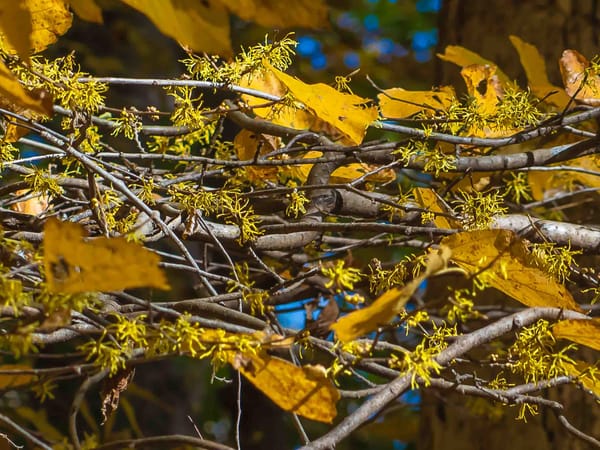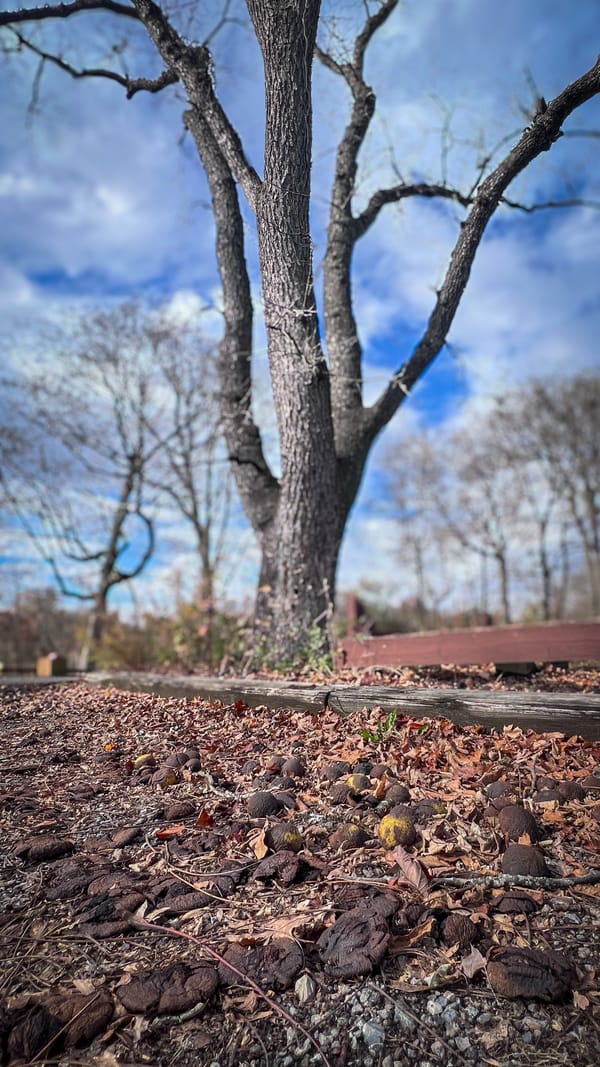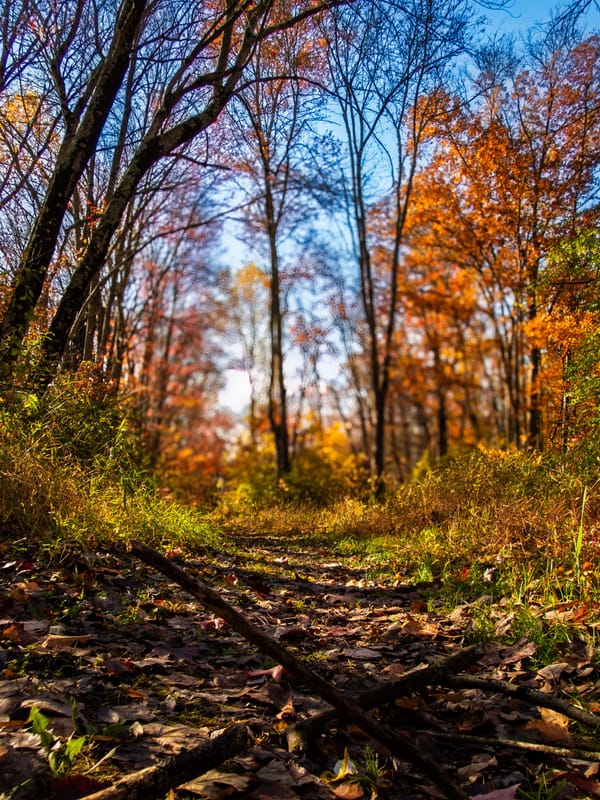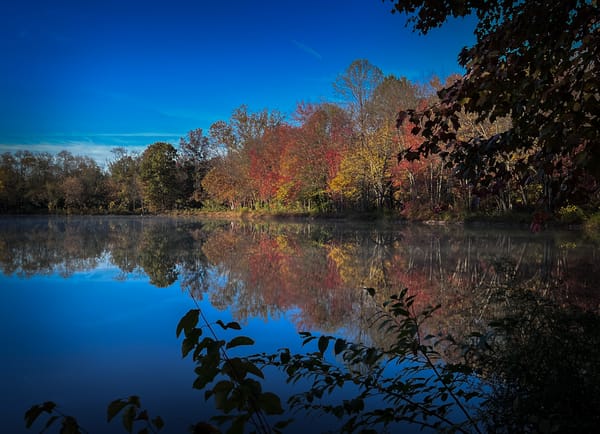Swallows
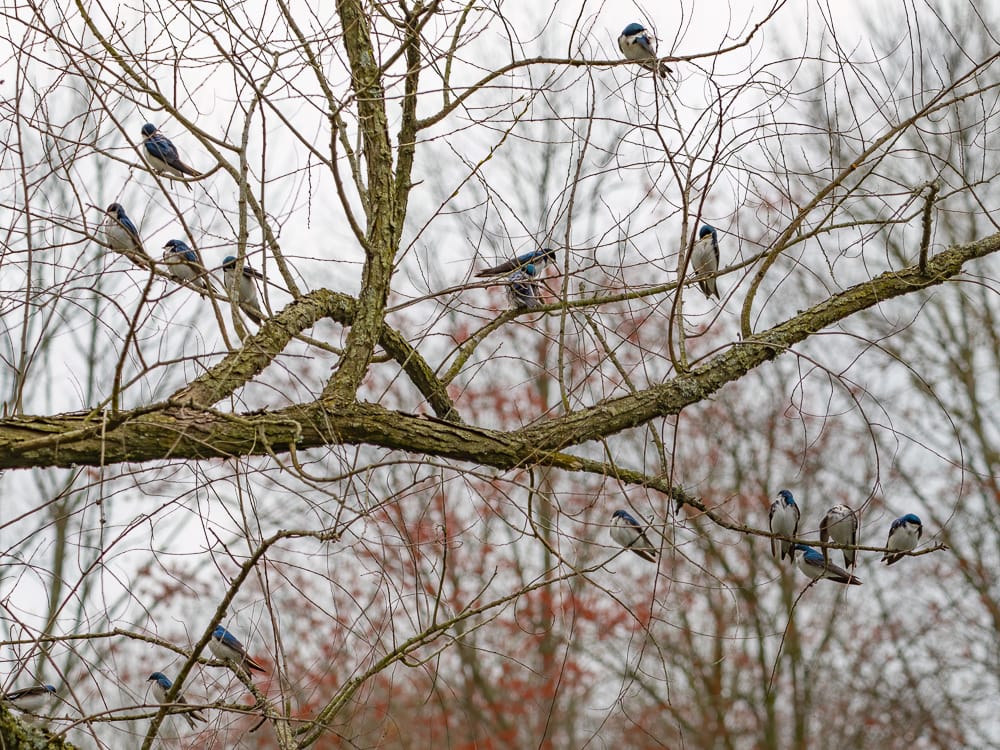
Tree Swallows, Northern Rough-winged Swallows and Barn Swallows frequent the ponds and meadows of the park. Stand quietly and watch as they speed by, often just a few feet away, darting and weaving through the air so effortlessly you'd swear they're doing it just for fun.
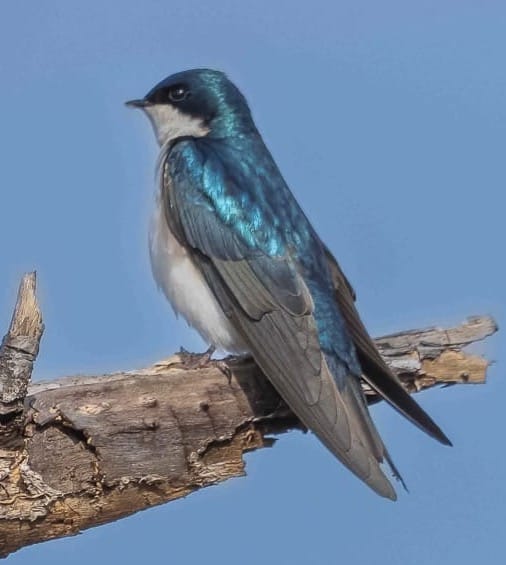
Tree Swallow Tachycineta bicolor
Iridescent, blue-green upperparts and bright white undersides. Cavity nesters, Tree Swallows depend on holes in dead trees or human-made nest boxes. Very social species that nests in colonies. Arrives mid-to-late March, very common throughout the summer, and migrate to the Gulf states and Central America by September or early October.
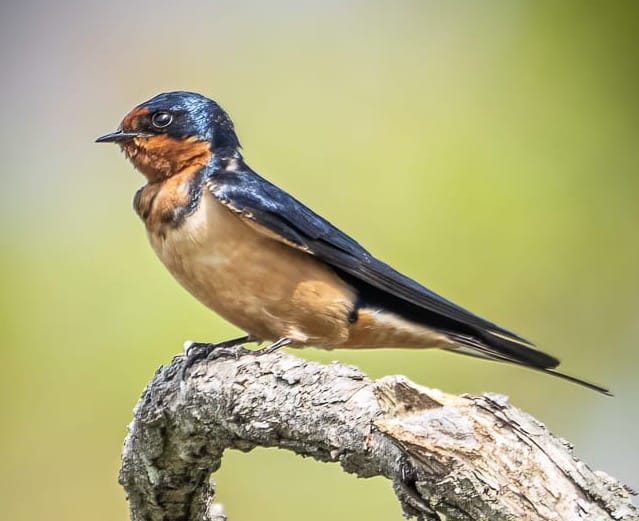
Barn Swallow Hirundo rustica
Glistening, dark blue back, reddish-orange throat, and long, deeply forked tail. This highly adaptable species lives in open habitats such as farmland, parks, and coastal waters. Barn Swallows are also colony nesters, building distinct cup-shaped nests from mud pellets on barns, under bridges, and in culverts. They are often seen flying very low to the ground or water, catching insects. Appear in mid-to-late April, common sight throughout the summer. In late summer forms large flocks and migrates to Central and South America, with most departing by late September.
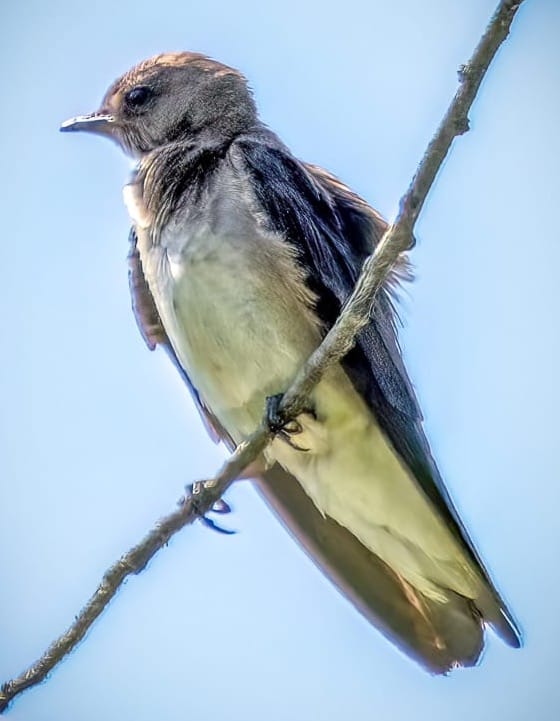
Northern Rough-winged Swallow Stelgidopteryx serripennis
Plain brown upperparts, a dusky throat, and a white belly. Its tail is squared-off, not forked. They are not social nesters and do not dig their own burrows, instead using existing tunnels from kingfishers in creek banks or holes in structures like drainpipes. Arrives in April. After breeding season, they begin their migration south towards the Gulf Coast and Central America, with most having left Pennsylvania by September.
Swallows are exquisitely adapted to foraging for airborne insects. Their streamlined, cigar-shaped bodies and long, supple wings enable them to slice through the air acrobatically at high-speed. Small feet and short legs minimize drag, and a catcher's mitt of a bill opens wide to snag insects.
These same adaptations make them awkward and vulnerable on land. Their long wings and short legs limit their movement, so they drink and bathe in flight. During a controlled, high-speed glide of the water's surface the swallow lowers its head, opens its beak and scoops up a drink of water. Imagine the control required to do this without catching a wing or losing momentum.
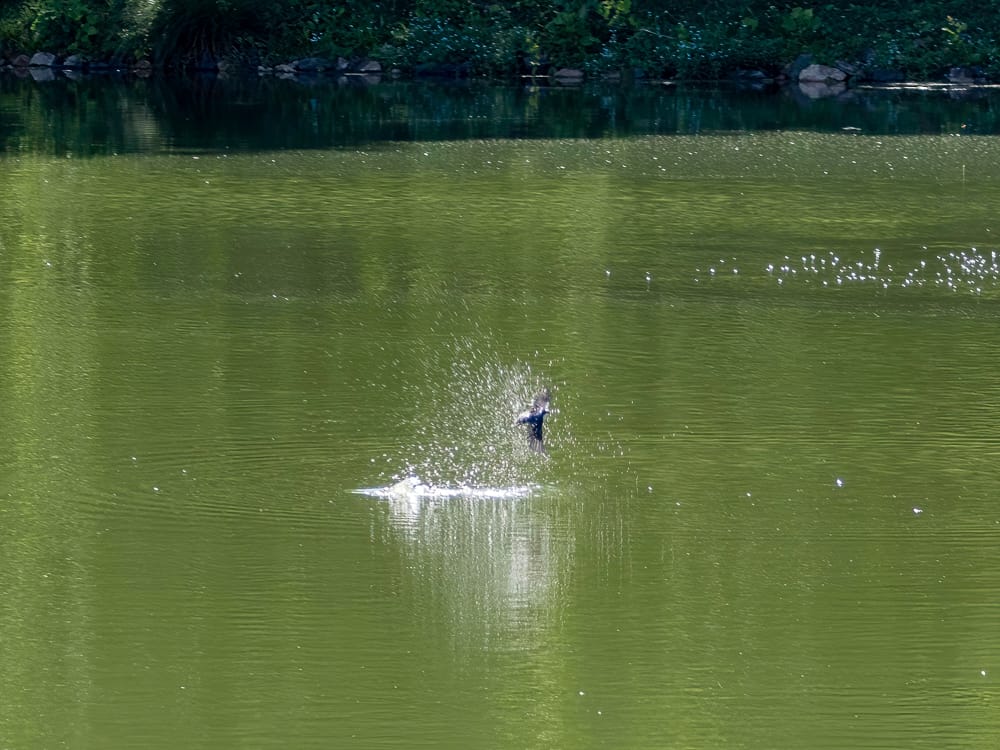
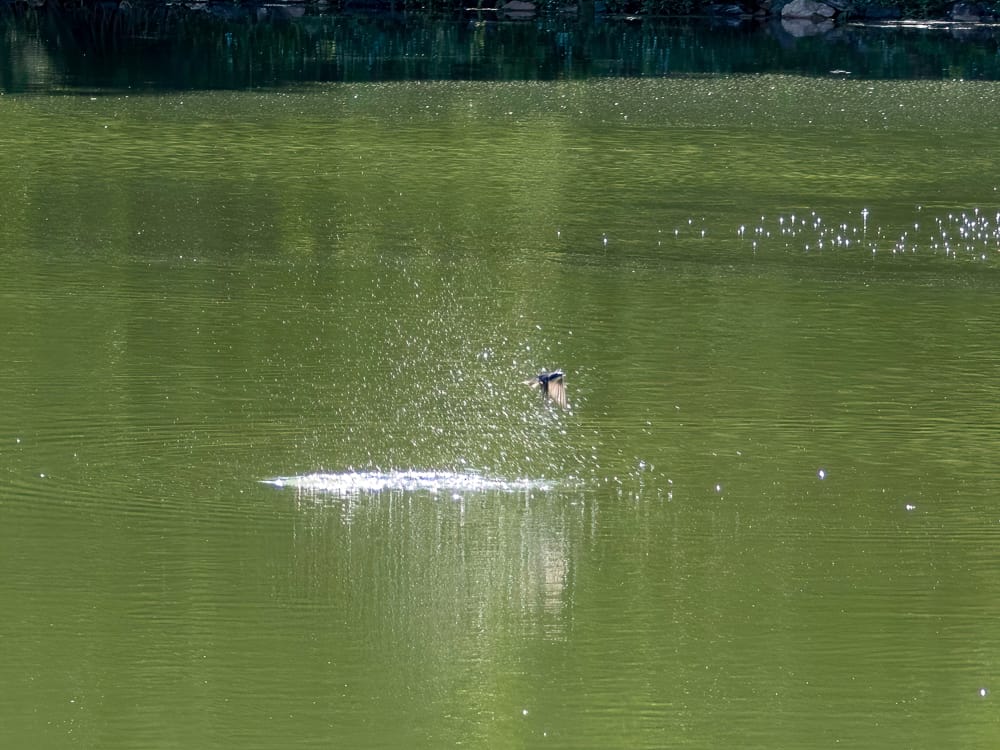
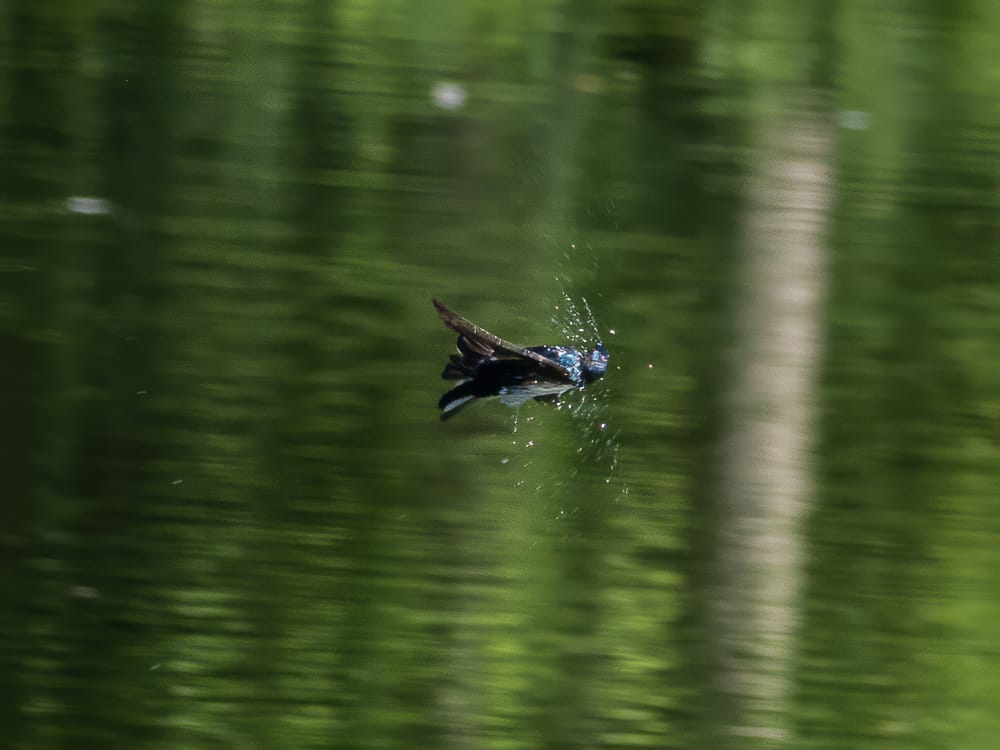
Tree Swallows bathing.
To bathe the swallow glides just over the surface, skims its belly in the water for a quick rinse, then flies upward, shaking off the droplets.
Swallows catch insects mid-air (called "hawking"), and sometimes snatch them right off the water's surface. There are some subtle differences in each species technique, but that they are able to do it at all is amazing.
Tree Swallows take insects from the water as a primary foraging method. They approach a pond from a low altitude, drop down, (sometimes going into the water with a distinct splash), and skid along almost like a stone skipping across the water's surface.
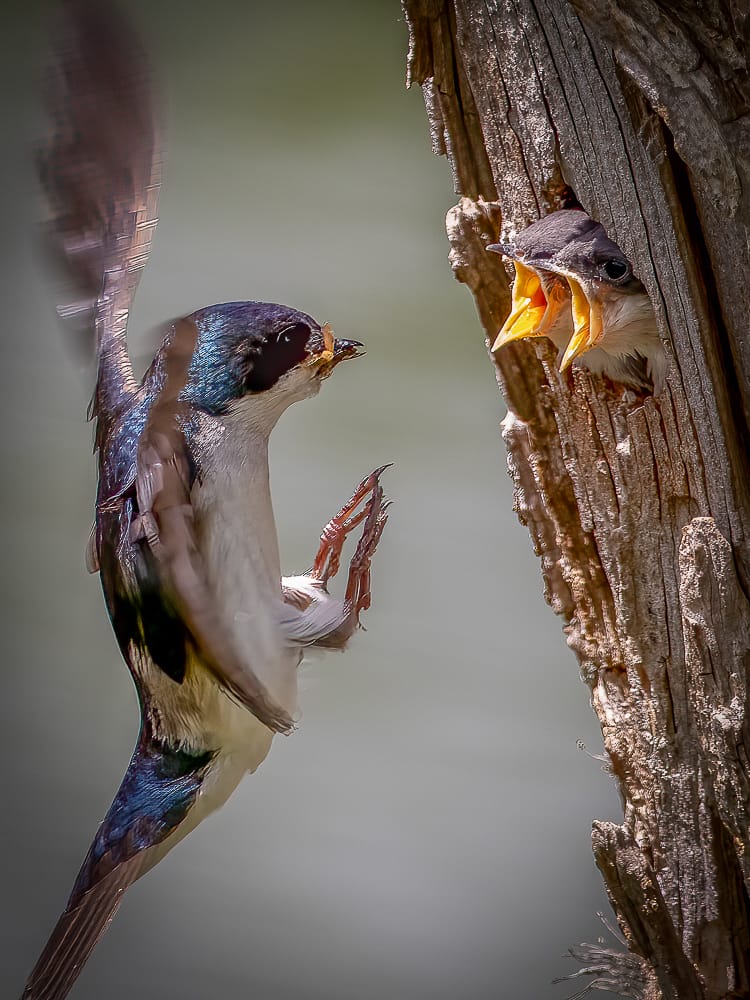
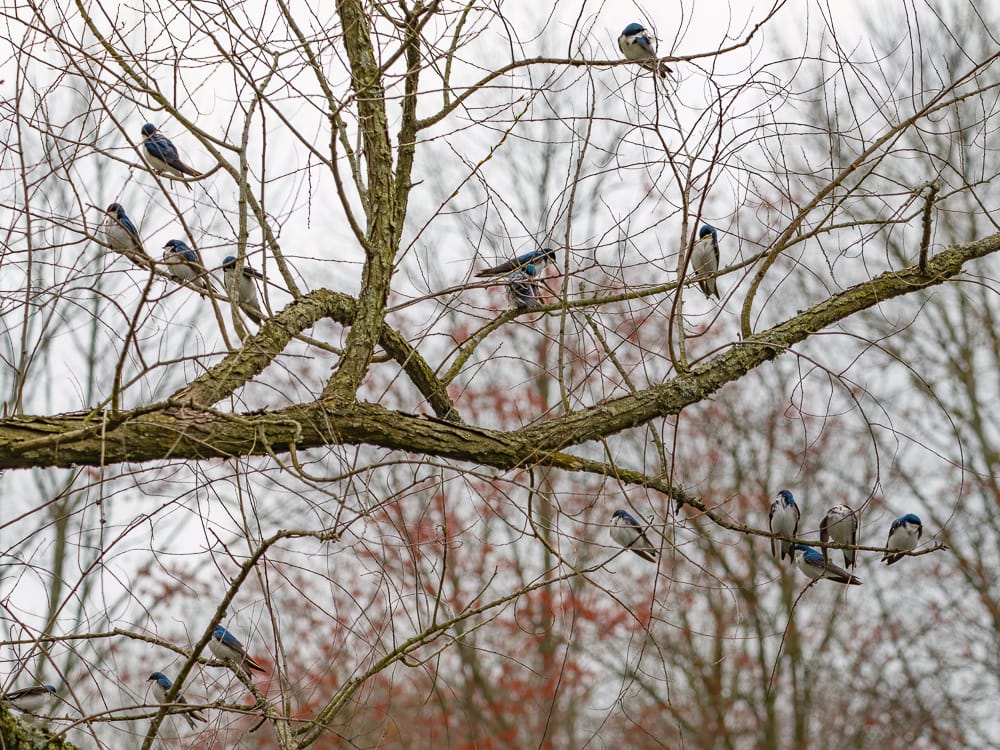
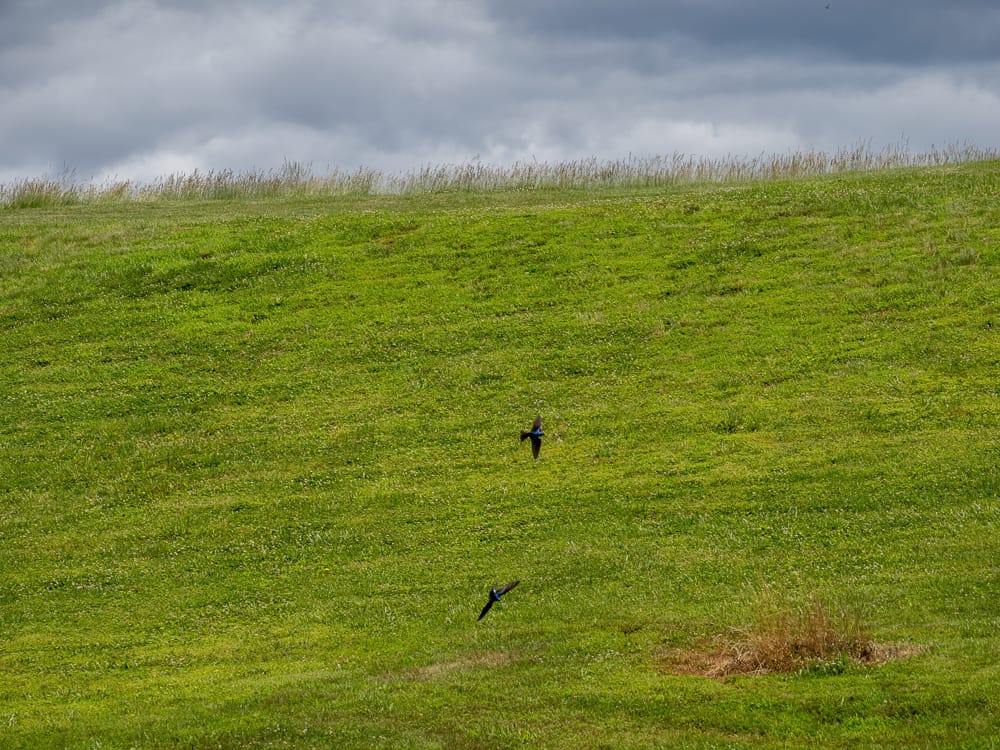
Tree Swallow feeding dragonfly to nestlings, It's not uncommon to see Tree Sallows perching in large groups near the ponds, Tree Swallows hawking for insects.
The tree swallow's diet is primarily flying insects supplemented by up to 20% plant material like berries and seeds during periods when insects are not flying. Because they are able to diversify their diet better than most species they arrive on their northern breeding grounds earlier in the spring, before insect activity has peaked.
Despite this dietary flexibility they show a marked preference for dragonflies and damselflies. These insects provide a predictable, nutrient-rich pulse of crucial long-chain omega-3 fats, scarce in land-based prey, which is essential for breeding and nesting Tree Swallows.
This dependency on aquatic insects makes them an excellent indicator of wetland health.
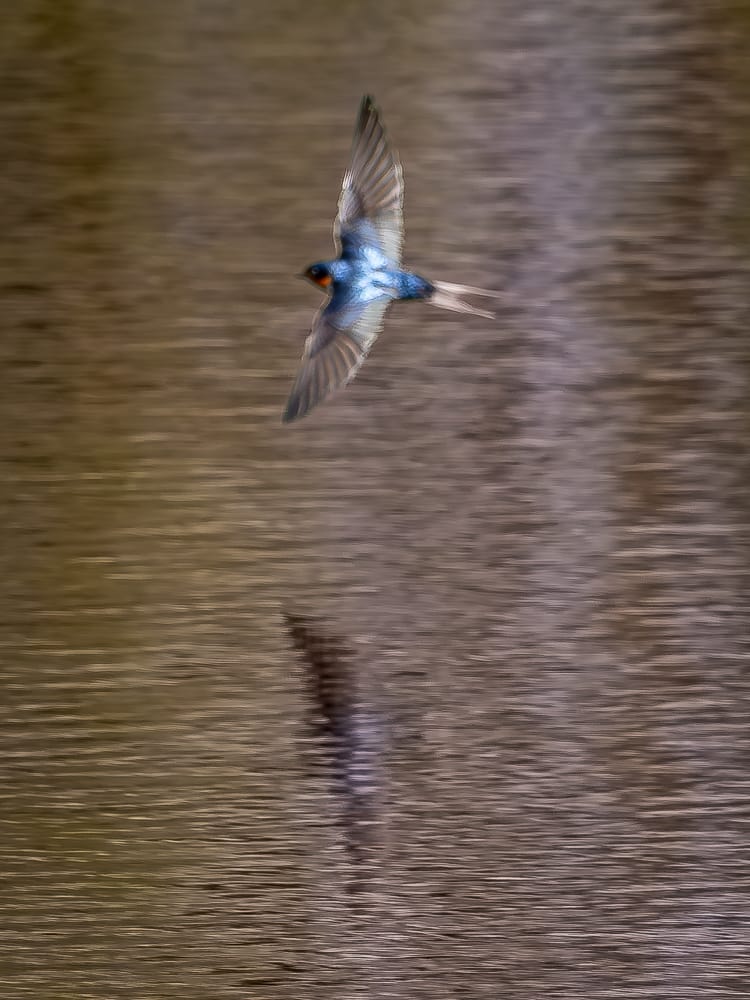
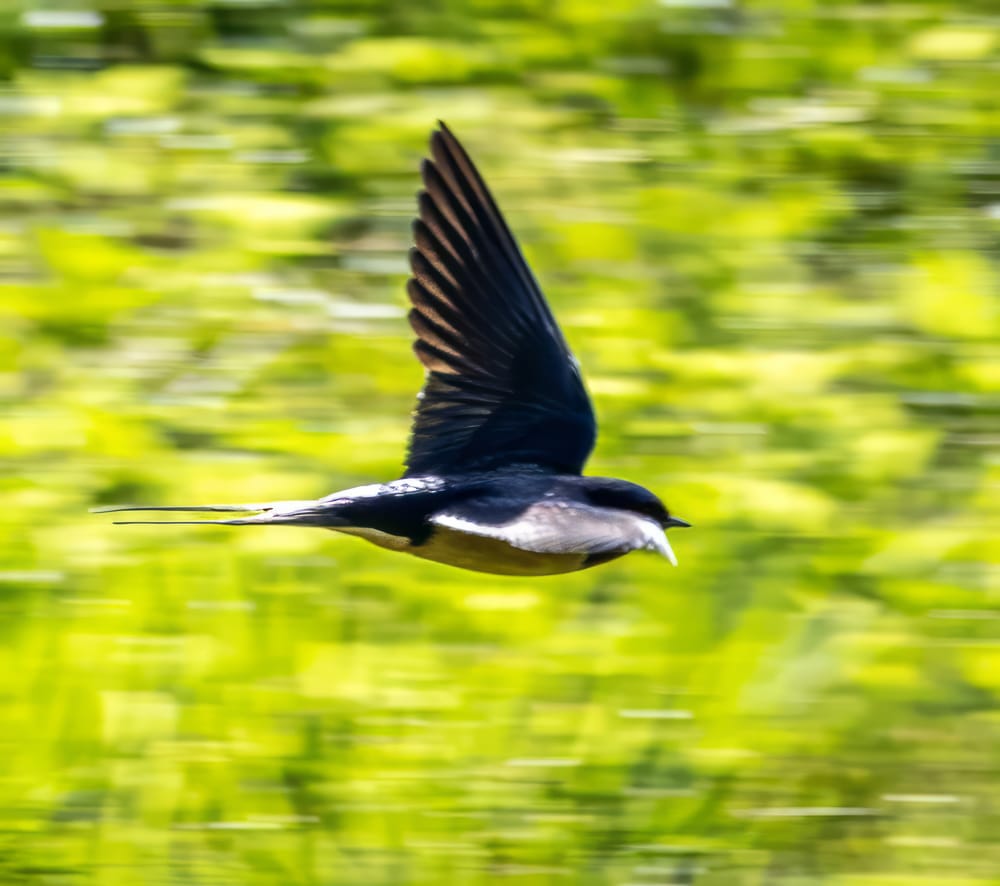
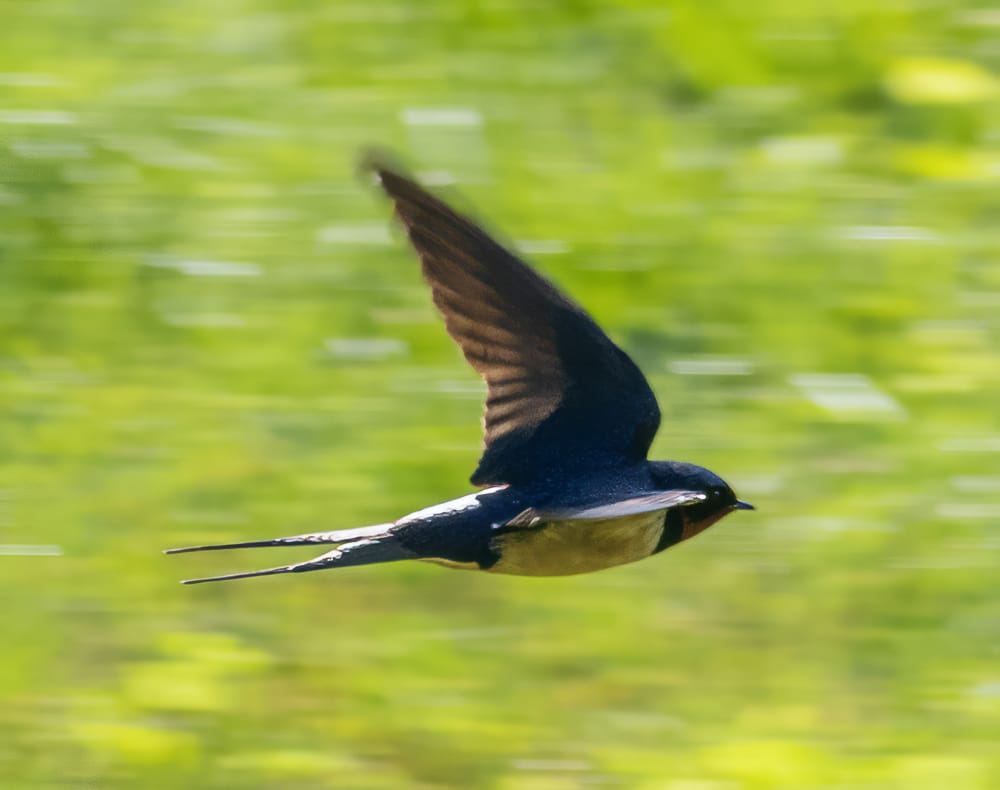
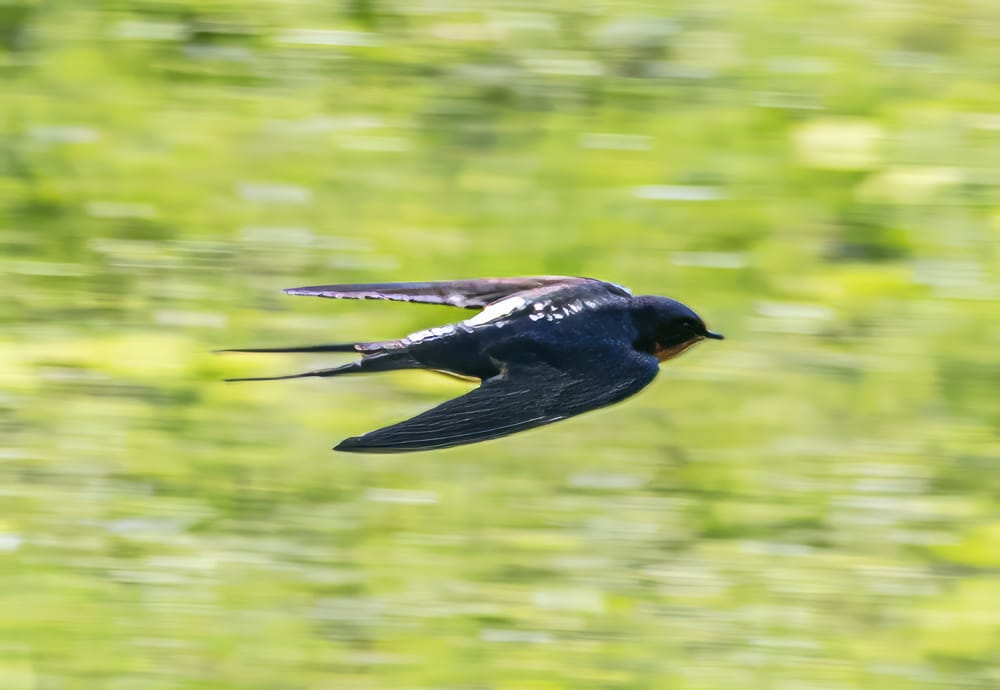
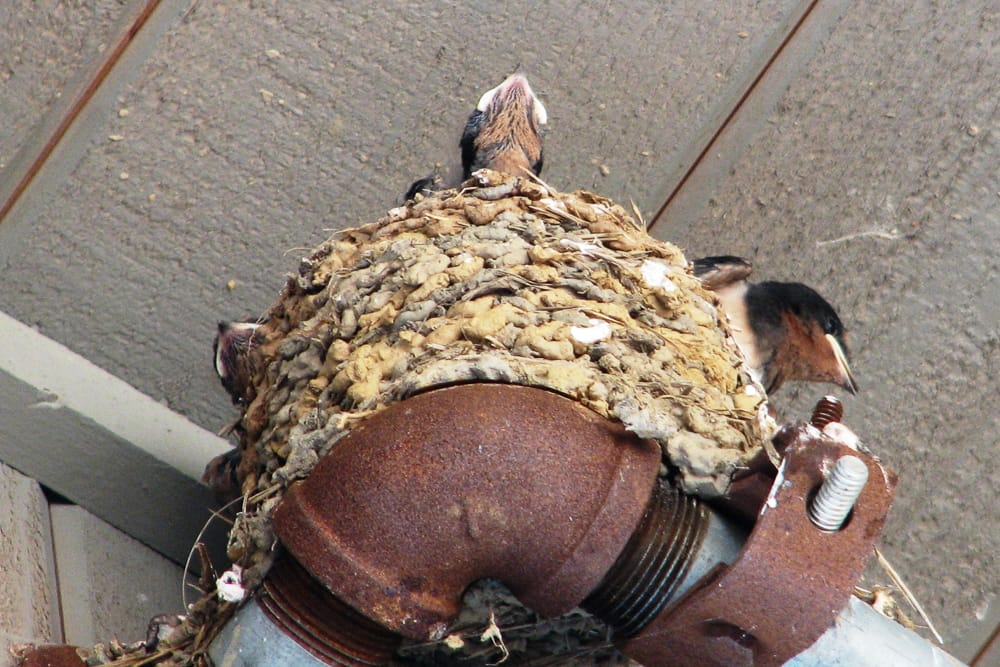

Barn Swallows have a forked tail, Barn Swallow nest in the park stage
The Barn Swallow is the most widespread swallow species in the world. When foraging for insects in the water it zooms just inches above the surface at up to 45 miles an hour. It swoops down, dips its beak into the water, snatches its prey with lightning speed, quickly twists it's head upward to secure its catch, and glides on, a few ripples the only sign it was even there.
Barn Swallows are generalist feeders, unlike the wetland-specialist Tree Swallows. Their low-altitude flight allows them to prey on a diverse array of insects across various microhabitats, including fields, pastures, marshes, and lake shores. While flies are a significant food source, their diet is diverse and also includes beetles, bees, wasps, ants, butterflies, and moths. Barn Swallows are often seen trailing farm equipment, cattle, and even people to catch insects disturbed from vegetation.
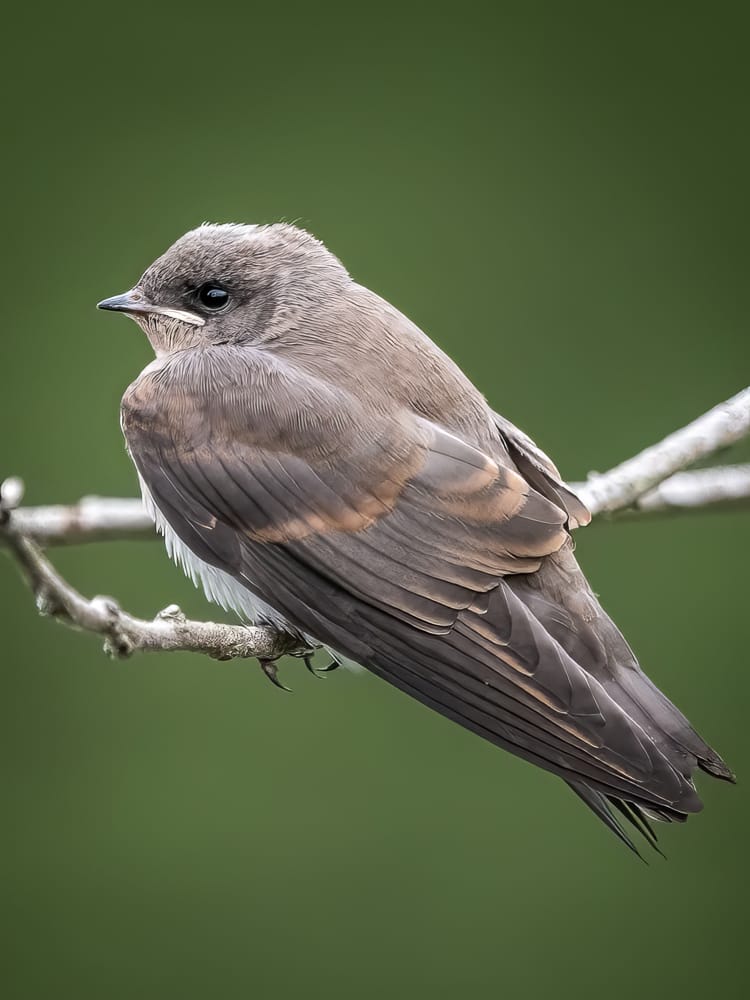
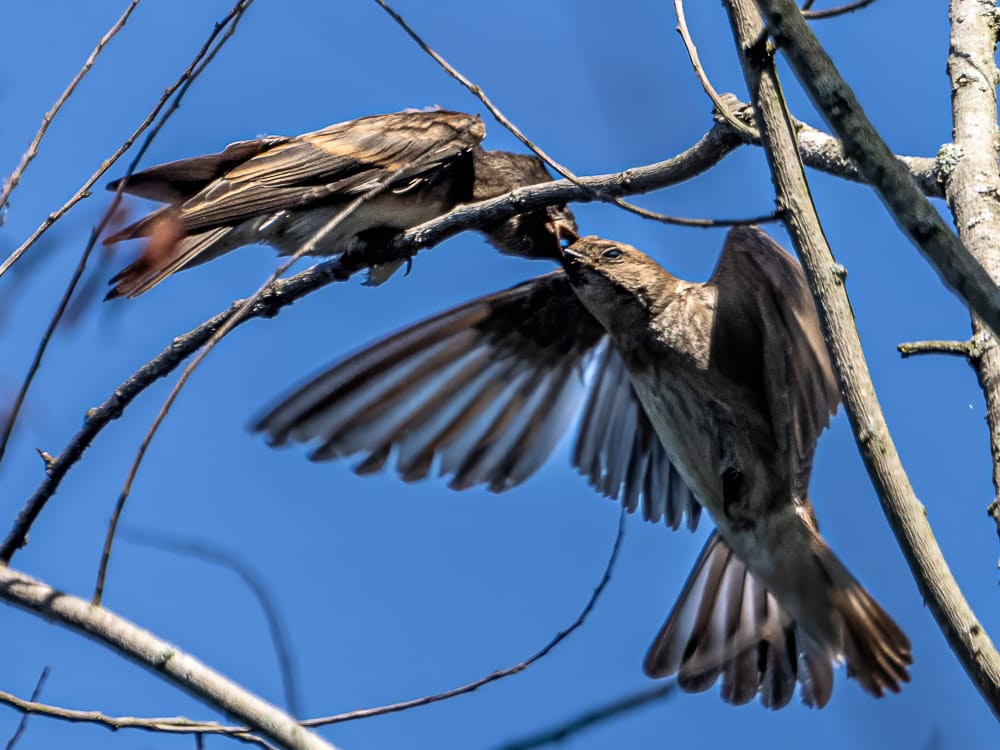
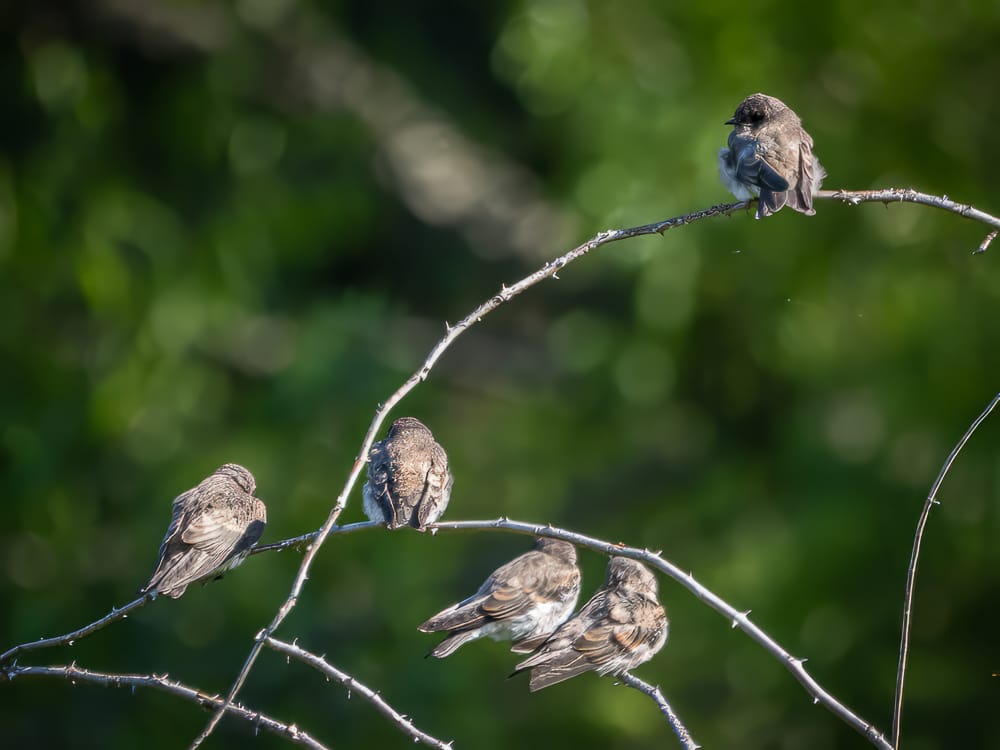
Immature Northern Rough-winged Swallows have light brown bands on their wings, Adult feeding a fledgling, a group of fledglings waiting to hone their flying skills near the pond.
The flight of the Northern Rough-winged Swallow is slower, more deliberate, and somewhat "fluttery". Will forage lower over water than most other swallows and more frequently often patrolling narrow gullies and streams.
It picks insects from the water's surface in a more targeted and delicate action than the Tree Swallow or Barn Swallow.
Unlike our other two swallow species the Northern Rough-winged Swallow may occasionally land directly on the ground or even the water's surface if insects are particularly abundant.
Having these three Swallow species at Nixon Park demonstrates the health of the park's ecosystem. The intricate connections that make this possible are always at risk due to less habitat, broken-up natural areas, and the unpredictable effects of climate change. So, every little thing we do to keep the ecosystem strong is important.

